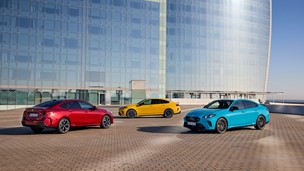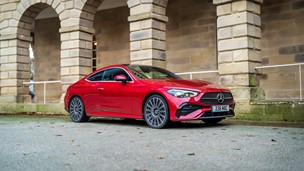As we've said many times before, MG Rover has had to squeeze every last drop of development out of the car originally launched as the 200. Unable to fund the creation of a new small hatchback, it has used the renamed 25 as the basis of two separate model ranges - the Streetwise and the MG ZR - and most recently, in May 2004, further updated the 25 with new front and rear styling, a redesigned interior, improved security features, more safety items as standard and some revision to the suspension.All but the last of these were necessary simply so that MG Rover dealers had an obviously refreshed and better-equipped model to sell. The suspension work is another story. Our test car demonstrated once again that the company employs some very clever chassis engineers - in which context it's worth noting that MG Rover people, not BMW people, made the MINI such an entertaining car to drive. The 25 is no MINI, but within its class you won't find many products in which the steering is so satisfying to use.You'll find better ride quality, though. Whether or not the age of the basic design has anything to do with it, the fact remains that our car was significantly uncomfortable even over quite minor bumps. It sometimes felt as if the wheels were attached to the bodywork by four pogo-sticks.Since the MG brand is devoted to performance, it comes as no surprise that this, the quickest of the Rover-badged 25 variants, isn't especially rapid. It covers the ground adequately, but if you want hard acceleration choose a ZR instead. The two-litre turbo diesel 25 is nearly as quick as this 1.6 petrol version, and a lot less thirsty.The issue is further complicated by MG Rover's unusual engine policy of fitting some cars with an almost equally powerful 1.4-litre engine which gives slightly inferior performance and almost no fuel economy benefit at all. The only reason I can see for buying one of those is the lower purchase price.Interior space is only moderate - you can get four six-footers in there, but they won't like it. Rear room is actually better than you might expect, but that's largely because the front seats don't go back very far, which means that the 25 is not suitable for tall drivers (I experienced slight back pain on longer trips, and I'm sure that wouldn't have been the case if I could have reversed the seat an extra inch).In this context, though, it's as well to bear in mind that MG Rover sees the 25 as a rival to the Citroen C3, Ford Fiesta, Peugeot 206, Renault Clio, Skoda Fabia, Vauxhall Corsa and Volkswagen Polo. You wouldn't choose any of those if you thought you were going to spend a lot of time giving lifts to hitch-hiking sumo wrestlers.And since we've started to make comparisons, let's observe that in this company - matching equivalent models as far as possible - the 25 is decently quick and averagely economical.But at just over £14,000 it's also fiercely expensive. No vaguely comparable member of the opposition costs remotely as much. Taking only price into consideration, its closest rival from the Clio range is - wait for it - the 182 Cup. Obviously, the question "shall I buy a Clio 182 Cup or a Rover 25 1.6 SXi?" is unlikely ever to be uttered, but you get the point.In fairness, the SXi is quite well-equipped. Metallic paint, reverse parking sensors, leather seat facings and wood-finish door pulls are included in the price, air-conditioning is standard on both this model and the slightly lower-spec SEi, and as with all other current 25s this one has the TrafficMaster warning system.But still. For a car of this size and performance, the idea of handing £14,000 to a salesman who then looks blankly at you and asks, "where's the rest of it?" is not one that appeals, especially in light of what's available in the other model ranges that MG Rover itself quotes. Engine 1589cc, 4 cylinders Power 109bhp Fuel/CO2 41.3mpg / 164g/km Acceleration 0-60mph: 9.5 seconds Top speed 115mph Price £14,095 Details correct at publication date




